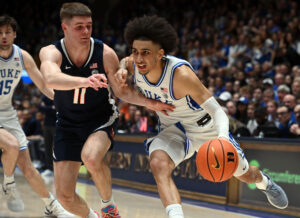Brooks Koepka is the first player to win the U.S. Open in back-to-back years since Curtis Strange won in 1988 and 1989. Koepka won two completely different golf tournaments the past two years. Last year, he won a shootout at Erin Hills tying the lowest score to par in U.S. Open history at -16. This year, Shinnecock Hills held the best in the world to over par and Koepka eventually outlasted Tommy Fleetwood by one shot finishing at 1-over par. Koepka turned in a cool 68 on Sunday to capture his second major and second straight U.S. Open.
It has been a whirlwind of a year since Koepka won at Erin Hills. He sat out the first couple months of 2018 due to a career-threatening wrist injury of destroyed ligaments and incredible pain. After finishing last at the Hero World Challenge and the Sentry Tournament of Champions, Keopka stepped away to address his injury which caused him to miss the year’s first major. He struggled upon his return at the Zurich Classic and Wells Fargo before turning in a top 15 at the Players Championship and a runner-up finish at the Fort Worth Invitational. Nonetheless, Koepka found his major-winning form quickly upon returned and managed to defend at Shinnecock Hills.
Wrong on Saturday, Right on Sunday
There is a fine line between a tough golf course and an unfair golf course. Unfortunately, Saturday’s headlines were about the golf course setup and Phil Mickelson’s awkward adventure on the 13th green. However, the USGA went to work on Shinnecock Hills before Sunday’s Final Round and put together a setup that challenged the best in the world. But it was also a setup that was gettable. As a result, the final round had a bit of everything. Tommy Fleetwood became the sixth player to shoot 63 in U.S. Open history and had an eight-footer to shoot the only 62 in the major’s lifetime. Master’s champion Patrick Reed birdied five of his first seven holes before cooling off late in his round.
The USGA pushed the envelope a little too far on Saturday. Mickelson’s way of letting them know was probably out of line, but the consensus among every golfer coming off the course was that the course was getting away from the USGA and they hoped they could get it under control before the final round. Sunday’s version of Shinnecock Hills was appropriately tough, but also fair to the best golfers in the world. In the words of Justin Rose, maybe golfers should be careful what they wish for because they absolutely got a vintage U.S. Open here in 2018.
Avoiding big numbers is key at the U.S. Open
Par is your friend at the second major of the year. Very rarely would 72 pars leave you standing alone at the top of the leaderboard on Sunday, but that was the case at Shinnecock Hills. Leaving the big numbers off the card is crucial. Bogeys are going to happen, but the doubles and triples can derail a round in a split second. Koepka only had two double bogeys or worse all week and both came during his first round 75.
Only one player who finished in the top five had more than two double bogeys or worse on the card. Tony Finau finished in solo fifth with four including his double bogey on 18 after the tournament had already been decided. Birdies are a luxury, par is your best friend, but those who avoid dropping multiple shots on one whole usually are near the top of a U.S. Open leaderboard.
A star-studded leaderboard missing multiple stars
The top of the leaderboard had the stars, but several stars missed the cut at this year’s U.S. Open. Rory McIlroy, after spending a week and a half around Shinnecock shot 80 on Thursday and missed the cut. Jordan Spieth bogeyed his final two holes on Friday to miss the cut by one stroke. Jason Day and Tiger Woods were never close to making the cut and the same can be said for Bubba Watson, Kevin Kisner, and Matt Kuchar. Shinnecock Hills had its way with some of the best on tour.






